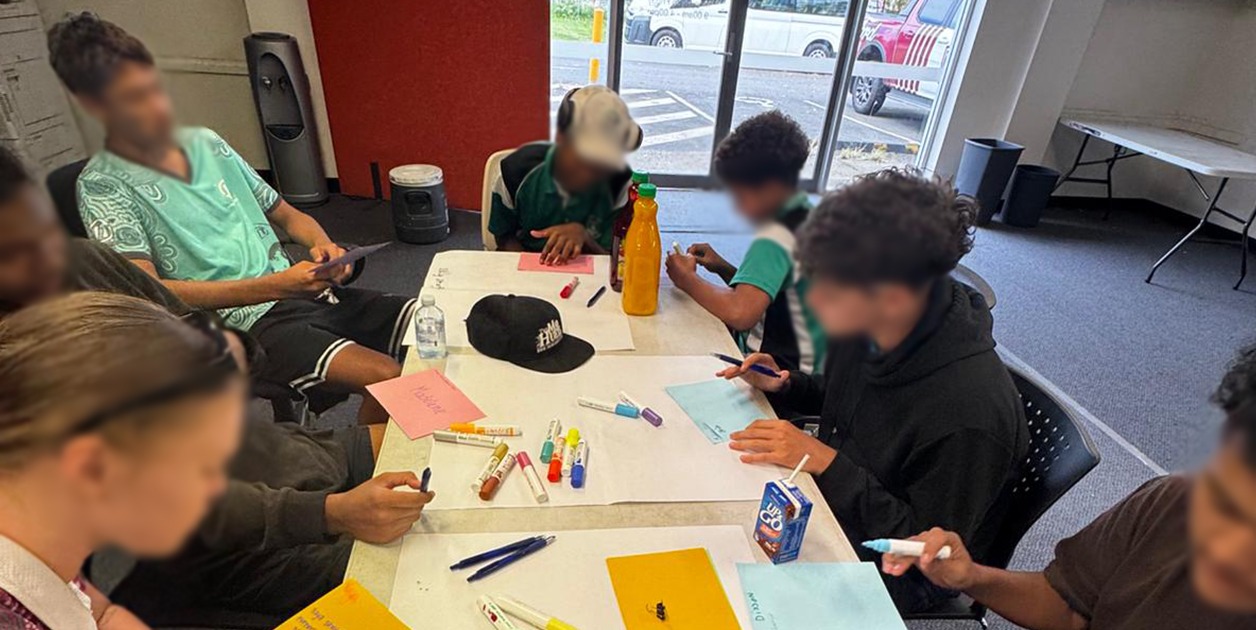
Changing the Narrative for At-Risk Youth in Australia
Why Confidence and Self-Belief Matter
Confidence and self-belief are not just feel-good traits—they’re foundational pillars for youth mental health, academic success, and future leadership. For young Australians, particularly those from disadvantaged communities or regional and remote areas, nurturing these qualities can lead to long-term personal and professional growth.
Across Australia’s diverse landscape—from urban centres to rural towns to Indigenous communities—one truth remains: when youth believe in themselves, they’re more likely to stay in school, avoid risk-taking behaviour, and contribute positively to society.
At JT Academy, we’re dedicated to building confidence in young Australians through culturally informed, mentorship-based, and empowerment-driven programs.
The Confidence Gap in Australian Youth
1. Mental Health and Social Pressures
Nearly 25% of Australian youth face mental health challenges. These issues, often linked to social media, bullying, and academic stress, undermine self-worth and can result in low confidence.
2. Lack of Role Models or Mentors
In many regional and Indigenous communities, young people grow up without exposure to role models who reflect their identity. This gap fuels self-doubt and limits ambition.
3. Cultural Disconnection
For Indigenous youth in Australia, connection to culture is a key source of confidence. Disconnection from language, land, or traditions erodes this sense of self.
The JT Academy Model: Building Youth Confidence in Australia
Founded by rugby league great Johnathan Thurston, JT Academy empowers young Australians through three pillars:
- Confidence: Believing in oneself and one’s abilities
- Courage: Taking risks and facing challenges
- Self-Belief: Embracing identity and striving for goals
Our model focuses on practical life skills, mentorship, emotional intelligence, and culturally safe spaces to build resilience and leadership.
Evidence-Based Ways to Build Confidence in Youth
1. Skill Development and Goal Achievement
Youth gain confidence through tangible success. Whether it’s sport, academics, or trade skills, measurable progress builds momentum.
JT Academy Example: Programs like JTBelieve help students set and track goals, boosting motivation through visible achievements.
Why It Matters: Early wins create a positive cycle: success reinforces effort and deepens self-belief.
2. Mentorship and Positive Role Models
A single mentor can shift a young person’s outlook entirely. Youth mentoring in Australia helps youth understand what’s possible.
JT Academy Example: Students interact with Indigenous leaders, athletes, and young professionals who offer inspiration and advice.
Why It Matters: Shared stories and similar lived experiences make success seem attainable.
3. Reconnecting with Culture and Identity
For Indigenous youth, cultural pride builds inner strength and direction.
JT Academy Example: We embed language, storytelling, and Elder guidance into all programs—building a bridge between past and future.
Why It Matters: Cultural identity strengthens self-esteem and creates a sense of belonging.
4. Encouraging Risk in Safe Spaces
Confidence is forged in discomfort. Youth need room to stumble and grow.
JT Academy Example: Initiatives like JTLeadLikeAGirl help young women tackle public speaking, lead teams, and build resilience.
Why It Matters: Taking risks in encouraging settings builds mental toughness.
5. Celebrating Effort and Progress
Recognition fuels belief. Praising consistency and courage, not just outcomes, reinforces that youth are valued.
JT Academy Example: We use affirmations and peer shout-outs to close every session.
Why It Matters: Youth confidence grows when they feel seen, heard, and validated.
Spotlight on JT Academy Youth Empowerment Programs
JTBelieve
A school engagement program focused on confidence-building, team leadership, and communication skills. Helps disengaged youth in Australia reconnect through structured activities and mentoring.
JTYouGotThis
An early intervention youth program for those showing risk indicators. Develops conflict resolution, emotional regulation, and personal responsibility.
JTLeadLikeAGirl
Empowers young women to challenge gender norms, gain leadership tools, and form supportive peer networks.
These programs align with youth wellbeing goals, reduce disengagement, and support youth development in Australia.
Role of Schools, Parents, and Community
Schools:
- Embed confidence and resilience into the curriculum
- Support culturally safe and inclusive learning spaces
Parents:
- Praise effort and perseverance over perfection
- Use empowering language and avoid shaming labels
Communities:
- Offer opportunities for youth to showcase their strengths
- Support local mentoring and leadership workshops
Corporate and Sponsor Involvement
Corporate partners are instrumental in promoting youth confidence by:
- Supporting youth leadership programs in Australia
- Funding school-based mentorship or skills development
- Offering internships and workplace exposure
- Co-creating events with measurable impact
JT Academy collaborates with ESG-aligned organisations to scale youth impact.
Measurable Outcomes from JT Academy
- Higher youth engagement in school and community programs
- Decreased dropout or disciplinary actions
- Greater participation in employment or vocational training
- Improved leadership, teamwork, and communication
Case Study: Kalinda, 15, from the Wiradjuri Nation, joined JTBelieve and later led her school’s regional youth conference. She now aspires to become an educator and mentor herself.
Confidence Is a Catalyst
Confidence has a ripple effect—it changes individuals, families, and entire communities. By investing in youth empowerment programs in Australia, we’re not just building confident individuals—we’re creating tomorrow’s leaders.
Let’s raise youth who lead with pride. Let’s raise confident Australians.




